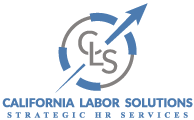Sexual harassment is a form of discrimination based on the following aspects:
- Sex/gender (pregnancy, childbirth, or related medical conditions)
- Gender identity
- Gender expression
- Sexual orientation
Individuals of any gender can be the target of this type of harassment. Sexual harassment may involve targeting a person of the same gender as the harasser, regardless of either person’s sexual orientation or gender identity. Unlawful sexual harassment does not have to be motivated by sexual desire.
Types of Sexual Harassment
- “Quid pro quo” (Latin for “this for that”): Occurs when someone conditions a job, promotion, or other work benefit on submission to sexual advances or any other conduct based on sex.
- “Hostile work environment”: It is produced when unwelcome comments or conduct based on sex unreasonably interferes with the work performance or creates an intimidating, hostile, or offensive work environment. Even though the harassment must be severe or pervasive to be unlawful, a single act of harassment may be sufficiently severe to be considered that way. You might experience sexual harassment even if the improper conduct was not aimed directly at you.
Forms of Sexual Harassment
The offensive behaviors that may be considered sexual harassment include:
- Unwanted sexual advances.
- Offering employment benefits in exchange for sexual favors.
- Leering; gestures; or displaying sexually suggestive objects, pictures, cartoons, or posters.
- Derogatory comments, epithets, slurs, or jokes.
- Graphic comments, sexually degrading words, or suggestive or obscene messages or invitations.
- Physical touching or assault, as well as impeding or blocking movements.
Employer: What is your Responsibility & Liability?
Regardless of the number of employees, all employers are covered by the harassment provisions of California law, which requires employers to take reasonable steps to prevent and promptly correct discriminatory and harassing conduct, creating a workplace free of harassment.
If employers fail to take such preventive steps, or they knew or should have known of the harassment and failed to take immediate and appropriate corrective action, they can be held liable for this form of harassment. In addition, an employer may be liable for the harassment of a non-employee (e.g., a client or customer), an employee, applicant, or person providing services for the employer.
All harassers, including supervisory and non-supervisory personnel, may be held personally liable for harassment, or aiding and abetting harassment. A program to eliminate sexual harassment in the workplace is not only required by law, but it is the most practical way for an employer to avoid or limit liability if harassment occurs.
At California Labor Solutions, we offer you Sexual Harassment Prevention Training. Your employees will enjoy a dynamic, high-quality presentation delivered by Mr. Shawn Larry. He will draw from his experience as a licensed workplace complaint investigator, HR Director, and former EEO Officer. If you are looking for affordable premium employee training services, California Labor Solutions is your best choice.
Actions to Follow to Prevent Harassment (or Correct it When it Occurs):
- Distribute copies of an informative brochure or alternative writing that complies with Government Code § 12950.
- Post a copy of the Department’s employment poster entitled “California Law Prohibits Workplace Discrimination and Harassment.”
- Develop a harassment, discrimination, and retaliation prevention policy in accordance with 2 CCR § 11023. The policy must:
- Be in writing.
- List all protected groups under the FEHA.
- Indicate that the law prohibits coworkers, third parties, supervisors, and managers with whom the employee comes into contact from engaging in prohibited harassment.
- Present a complaint process that guarantees confidentiality to the extent possible, a timely response, an impartial and opportune investigation by qualified personnel, documentation, tracking for reasonable progress, appropriate options for remedial actions and resolutions, and timely closures.
- Provide a complaint mechanism that does not require employees to complain directly to their immediate supervisor. The mechanism must include provisions for direct communication –oral or written– with a designated company representative, a complaint hotline, access to an ombudsperson, identification of California’s Department of Fair Employment and Housing (DFEH) and the United States Equal Employment Opportunity Commission (EEOC) as additional avenues for employees to lodge complaints, among others.
- Instruct supervisors to report any misconduct complaints to a designated company representative, such as a human resources manager, so that the company can try to resolve the claim internally. Employers with fifty or more employees are required to include this as a topic in the mandated sexual harassment prevention training (see 2 CCR § 11024).
- Indicate that when the employer receives allegations of misconduct, a fair, timely, and thorough investigation will be conducted to provide all parties with appropriate due process, reaching reasonable conclusions based on the evidence collected.
- Make clear that employees shall not be retaliated against as a result of making a complaint or participating in an investigation.
4. Distribute the harassment, discrimination, and retaliation prevention policy by doing one or more of the following:
- Printing the policy and providing a copy to employees with an acknowledgment form for employees to sign and return.
- Sending the policy via email with an acknowledgment return form.
- Posting the current version of the policy on a company intranet with a tracking system to ensure all employees have read and acknowledged receipt of the policy.
- Discussing policies upon hire and/or during a new hire orientation session.
- Using any other method that ensures employees receive and understand the policy.
5. When the employer’s workforce at any facility or establishment contains ten percent or more persons who speak a language other than English, the employer shall translate the policy into every one of those spoken languages.
6. In addition, employers who do business in California and employ five or more part-time or full-time employees must provide at least one hour of training on the prevention of sexual harassment, including harassment based on gender identity, gender expression, and sexual orientation, to each non-supervisory employee; and two hours of such training to each supervisory employee. Training must be provided within six months of the assumption of employment. Employees must be trained during the calendar year, and after January 1, training must be provided again every two years.
California Labor Solutions is your partner
As a small or medium-sized employer, you may not need a full-time in-house HR manager. But that doesn’t mean you don’t need a reliable HR partner. Whether you have one employee or hundreds, it is essential to be following State and federal employment laws. CLS is your support in Human Resources. We specialize in protecting your business from potential HR-related issues, which includes minimizing the impact if problems arise by providing the expert guidance you need to thrive during the process.
California Labor Solutions serves as your guide regarding sexual harassment prevention training and sexual harassment workplace investigations. Contact us!

